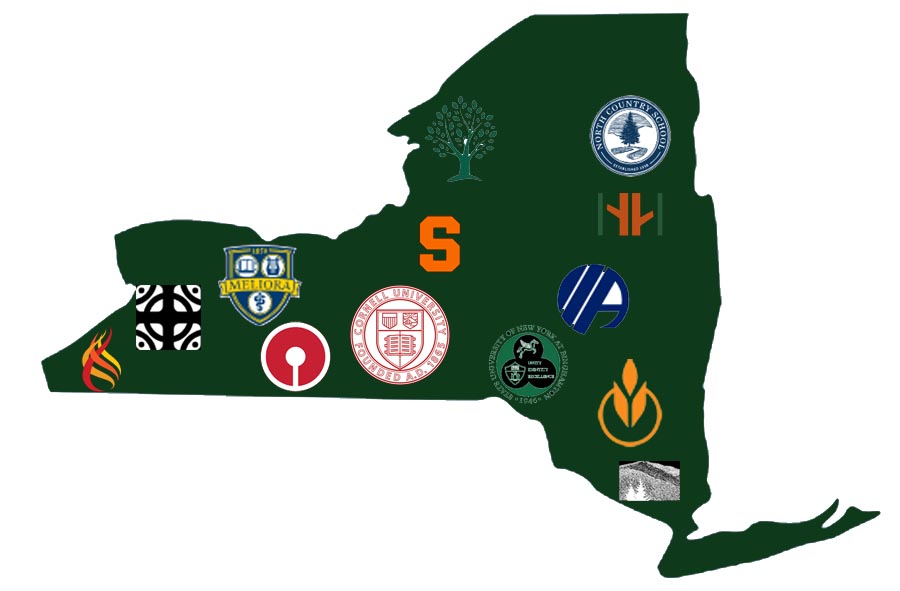Nonprofits: a grassroots force
Too often, nonprofit organizations are viewed as a world apart from the local economy. Most, after all, do rely primarily on grants and gifts, rather than sales and contracts. Their image is that of free meals in church basements, and sagging storefronts ministeringn to drug addicts and alcoholics.
That, to be sure, is part of the picture. But the nonprofit realm also encompasses hospitals and colleges, fire departments and ambulance corps, libraries and youth centers, historical sites and museums, art galleries and performance troupes.

The economic impact of these organizations, as direct employers and as magnets for new money being pumped into aging communities, is enormous. And despite the ongoing efforts of researchers, it’s probably immeasurable.
Beyond dollars, there are so many ways to gauge the importance of nonprofits in the survival and growth of Upstate communities. The clear baseline is that the existence of a vibrant nonprofit class is a reflection of hope.
Statewide, nearly 118,000 nonprofit organizations employ 1.3 million people and spend more than $200 million annually. That’s 16.6% of the total private workforce. Put another way: One out of six employees works for a nonprofit.
It will come as no surprise that New York City dominates those statistics, with 41% of all exempt organizations in NYS. An interesting if sweeping conclusion Upstate: Communities with many nonprofits are likely to be more robust, while those with little nonprofit activity tend to believe their best days were in the past.
This isn’t a scientific finding. I’m no academic. It’s just a general observation based on decades in Upstate New York, working first as a newspaper journalist and now with nonprofits.
The trendline can’t be reduced to a simple graph, although if you calculate the number of nonprofits per population, you see an obvious pattern.
The highest numbers are almost always in Upstate’s most dynamic communities. The towns and villages at the lower end of this equation are apt to be faltering, nostalgic for the good old days when local factories provided jobs and shored up a largely uneducated middle class that won’t be seen again.
This is what statisticians might describe as a self-fulfilling metric. Communities with lots of nonprofits tend to be more affluent because well-off people have the time and resources to support nonprofits.
While that’s true, a more important driver of nonprofit activity seems to be the presence of a few civic-minded residents. Sometimes they’re office holders. Just as often, they’re merchants, or jazz lovers, or people who care about local history, or environmentalists, or parents of school-age children who step up when they see an unmet need.
Their volunteer work leads to collective action, which leads to the formation of nonprofit groups, which leads to alliances and offshoot organizations. This is economic growth, though not the sort accorded much attention by government-run development programs.
The dedication of a few multiplies. Before you know it, the community has a vigorous nonprofit sector, creating value not only with the grant monies it attracts but with the activities it supports, the unpaid volunteer labor force it mobilizes, and the hope it sustains.
We’re likely facing tumultuous economic times. Global trading and offshore manufacturing have replaced commerce that used to be local. City centers continue to decline and fringe suburbs are seeing a ripple effect. Shopping malls that formed the core of many suburban areas are succumbing to online competition. The labor force is just beginning to feel the impact of artificial intelligence. Employment sectors that seemed invulnerable are now rattled by the prospect of being supplanted by AI.
Upstate New York has already weathered such storms. The devastation left by the decline in manufacturing was also a learning opportunity. Those paying attention should have figured out by now that civic-minded residents and the nonprofit organizations they launch will be just as crucial to our cities and villages as the local entrepreneurs who launch startup businesses.
2 Comments
Karen Guidarelli
Thank you for making my Monday Laurie! The economic impact of nonprofits is overlooked as is the value of volunteers and the leverage that passion can have in shaping a community. It’s not sustainable to have a narcissistic society, so how do we turn this ship around? Thanks so much for your writing Laurie!
Rebecca Kelly
Laurie Bennett, Thank you for your encouraging and clarifying thoughts and observations. As Artistic Director of the Tahawus Cultural Center (Gallery and Dance Studio) in the hamlet Au Sable Forks, NY (population 559), and President of the Essex County Arts Council in upstate NY since 2020, and formerly, Choreographer/ Artistic Director for Rebecca Kelly Ballet, NYC, 1979-2020), I think about the arts, the energy of creativity and imagination, and its potential and impact – all the time!
I am forwarding your July 2024 article to members of my community – Town of Jay Supervisor, the Au Sable Forks Library, Ausable River Valley Business Association, because you eloquently describe the impact and support the efforts of non-profits, how and why they are key in the community, the civic-minded residents, the parents who perceive an unmet need, — and, the huge potential…